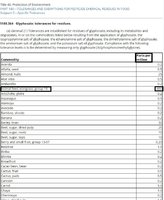On the other hand, whereas the intake of cream resulted in an increase in both plasma LPS (lipopolysaccharide) concentration and TLR-4 expression( the expression of Toll-like receptor) glucose had no effect on either TLR-4 expression or plasma LPS concentration. Orange juice did not induce either SOCS3 or TLRs nor did it induce an inflammatory response. It would thus appear that the oxidative stress– and inflammation-inducing actions of the HFHC ( high-fat high-carbohydrate) meal are due to the combination of saturated fat and the carbohydrate (glucose) at least. On the other hand, only cream induced an increase in plasma LPS concentration and an increase in the expression of TLR-4, the receptor for LPS. Thus, saturated fats may have a more profound role in the pathogenesis of postprandial inflammation, as they may also perpetuate inflammation through the increases in LPS and TLR-4. By implication, saturated fats also appear to increase the permeability of intestinal epithelium and contribute to the breakdown of the intestinal barrier. Both carbohydrate and saturated fat induced an increase in the expression of SOCS3, the mediator of interference in insulin signal transduction. In contrast, orange juice does not induce any of the changes in oxidative and inflammatory stress or an increase in either LPS or TLR-4 or SOCS3. By implication, it may not affect the intestinal barrier either, because there is no increase in plasma LPS concentration after orange juice, despite it containing concentrations of endotoxin similar to those of cream. It is possible that the observed effect of orange juice is attributable to its flavonoids, naringenin and hesperidin, because they exert reactive oxygen species–suppressive (17) and anti-inflammatory effects. These potent effects have been demonstrated in experimental animal models in relation to endotoxin-induced inflammation and in cells in vitro (18,19). In this context, it is important to state that our recent data demonstrate that the consumption of orange juice with an HFHC meal prevents not only oxidative stress and inflammation but also the increase in LPS concentrations and the increase in the expression of TLR-4 and SOCS3 observed after ingestion of the HFHC meal alone (20). It is also relevant that LBP (Lipopolysaccharidebinding protein) increased after glucose intake but not after cream. Thus, the increase in LBP after an HFHC meal observed by us was probably due to the carbohydrate component of the meal. LBP did not alter after the intake of orange juice or water either






